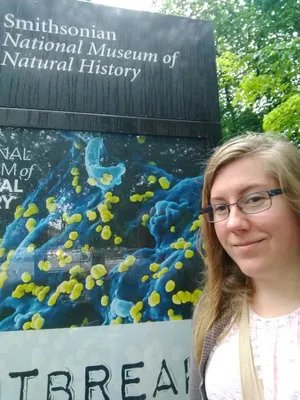NATIONAL MUSEUM OF NATURAL HISTORY
Six Videos that Put the Pandemic in Context
These six video webinars explore the life cycle of modern outbreaks — from infection to immunity — and put COVID-19 into historical context.
:focal(1330x705:1331x706)/https://tf-cmsv2-smithsonianmag-media.s3.amazonaws.com/blogging/featured/Artistic_Rendering_of_SARS-CoV-2.jpg)
The global spread of COVID-19 has caused dramatic changes in our daily lives and left many wondering how we got here and what we can do to prevent another pandemic. From how infectious diseases arise and spread to how vaccines work, there’s a lot to consider when thinking about global health. These six video webinars presented by the Smithsonian’s National Museum of Natural History explore the life cycle of modern outbreaks — from infection to immunity — and put COVID-19 into historical context.
A Conversation with Dennis Carroll: Predicting Pandemics
As we navigate the COVID-19 pandemic, a better understanding of what causes zoonotic diseases can help us prevent future outbreaks. This video webinar talks about the United States Agency for International Development’s PREDICT project, a 10-year study aimed at identifying dangerous viruses in animals before they spread to humans, and finding ways to mitigate future disease spillovers.
Speakers:
-
Dennis Carroll, Former Director of Pandemic Influenza and Other Emerging Threats Unit at the United States Agency for International Development (USAID)
-
Sabrina Sholts, Curator of Biological Anthropology at the Smithsonian’s National Museum of Natural History
Pandemic Past, Pandemic Present, with Medical Historian Mark Honigsbaum
The past is full of lessons that can inform the present. In this video, medical historian Mark Honigsbaum narrates the last century of scientific struggle against deadly contagious diseases and compares the influenza pandemics of the 19th and 20th centuries to COVID-19.
Speaker:
-
Mark Honigsbaum, Medical Historian and author of The Pandemic Century: One Hundred Years of Panic, Hysteria and Hubris
Vaccines in the Time of COVID-19
Drawing upon the expertise of research scientists, federal agencies and anthropologists, this four-part series demystifies the production of vaccines. The series begins with an insider’s perspective on research approaches, followed by presentations on safety and testing, approval, the supply chain and issues of equity, access and hesitancy.
Part 1: The Science of Vaccines
Early vaccines relied on exposing the immune system to weakened versions of a pathogen to elicit an immune response. Modern vaccinologists, however, use different strategies to stimulate immunity. Part 1 of “Vaccines in the Time of COVID-19,” looks at the tools that immunologists use and promising approaches for combating COVID-19.
Speaker:
-
Barney Graham, Deputy Director of the Vaccine Research Center, and Chief of the Viral Pathogenesis Laboratory and Translational Science Core at National Iinstitute of Allergy and Infectious Diseases/National Institutes of Health
Part 2: Ensuring Vaccine Safety
Rigorous testing helps make vaccines safe. But this step often adds years to the timeline of vaccine development. Part 2 of “Vaccines in the Time of COVID-19” discusses the testing and approval process and considers how researchers might develop safe vaccines on a quicker timeline.
Speakers:
-
Walter Orenstein, Director of the Emory Program on Vaccine Policy and Development
-
Paul Offit, Chief of the Division of Infectious Diseases at the Children's Hospital of Philadelphia
Part 3: From the Laboratory to a Shot in the Arm
Vaccine producers around the world are scaling up production of the raw materials needed to make a COVID-19 vaccine. Part 3 of “Vaccines in the Time of COVID-19” shows how vaccines are produced and how that production is financed and distributed, including implications for equitable distribution.
Speaker:
-
Lynda Stuart, Deputy Director, Vaccines and Human Immunobiology, Bill and Melinda Gates Foundation
Part 4: Vaccines and Society
A COVID-19 vaccine could help enough of the world population reach immunity to end the pandemic. But some people’s hesitancy to be vaccinated over suspicions of unsafe vaccines could threaten that process. Part 4 of “Vaccines in the Time of COVID-19” considers the policies and societal conditions driving vaccine hesitancy.
Speaker:
-
Sharon Kaufman, Professor Emerita and former Chair of the Department of Anthropology, History and Social Medicine at the University of California San Francisco
For more information about zoonotic diseases, the connection between human, animal and environmental health, and the origins of pandemics, please visit the museum’s digital exhibition, “Outbreak: Epidemics in a Connected World.”
Related story:
'One Health' Could Prevent the Next Coronavirus Outbreak
Meet the People Leading the Fight Against Pandemics
New Smithsonian Exhibit Spotlights 'One Health' to Reduce Pandemic Risks









